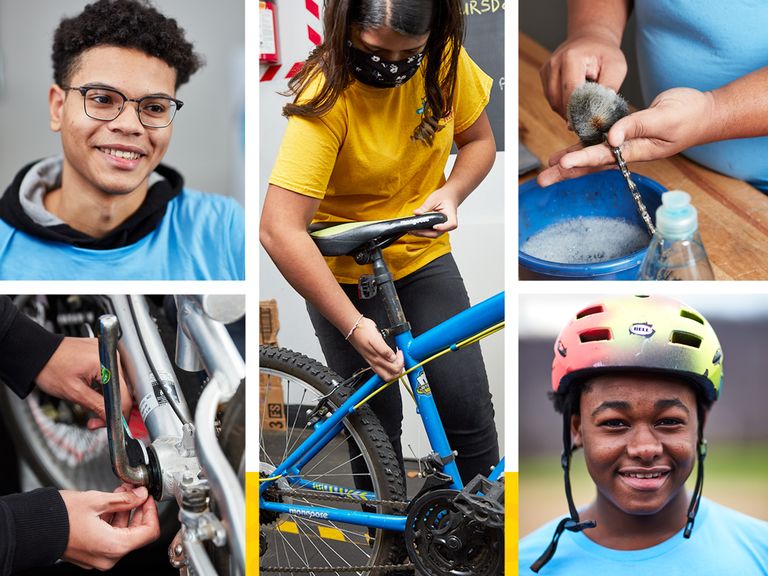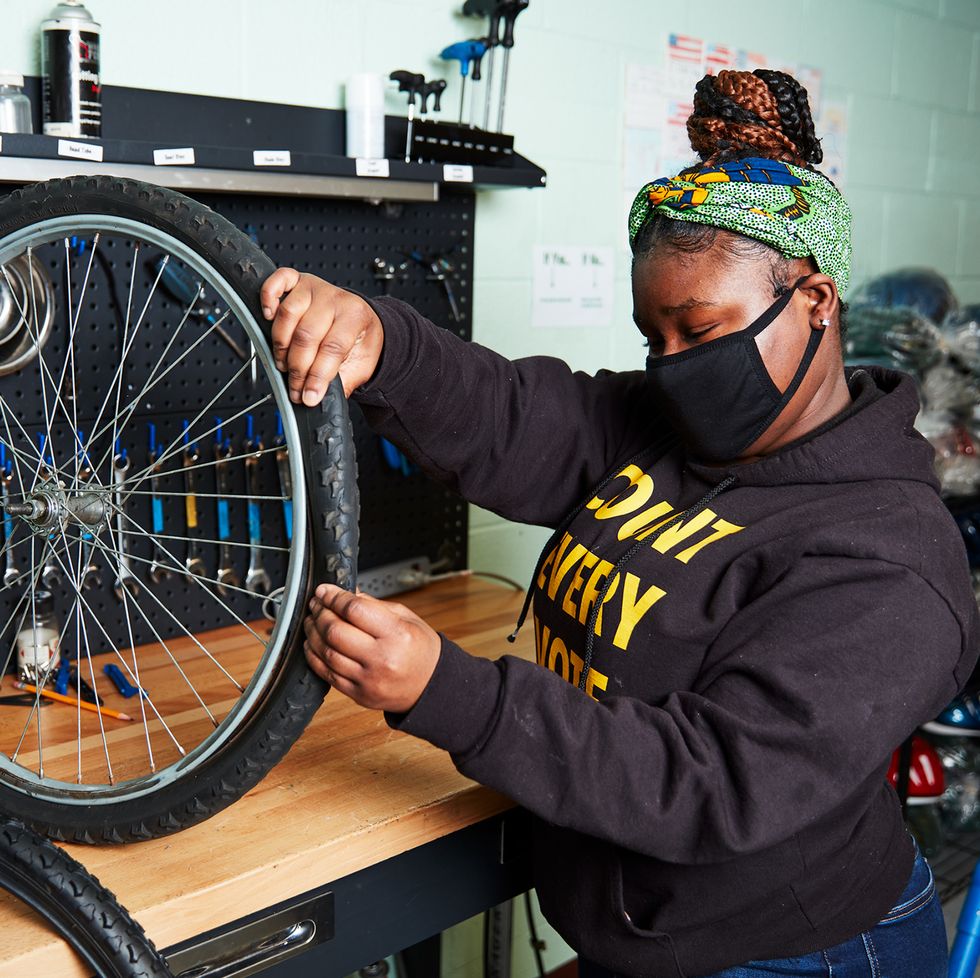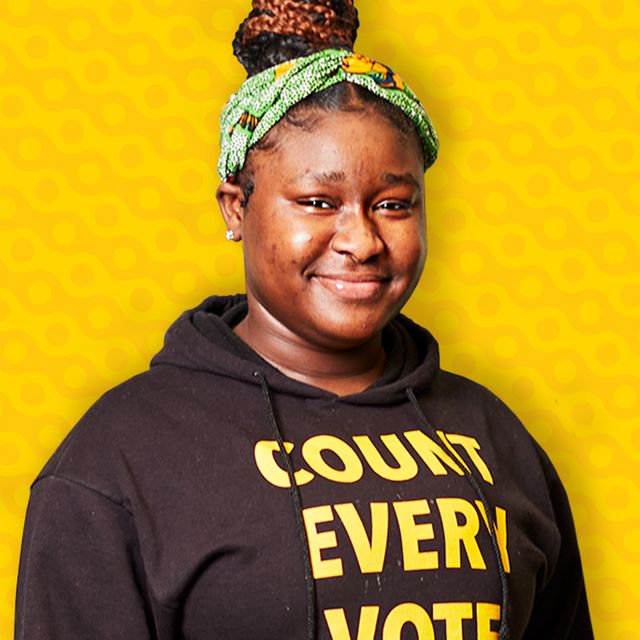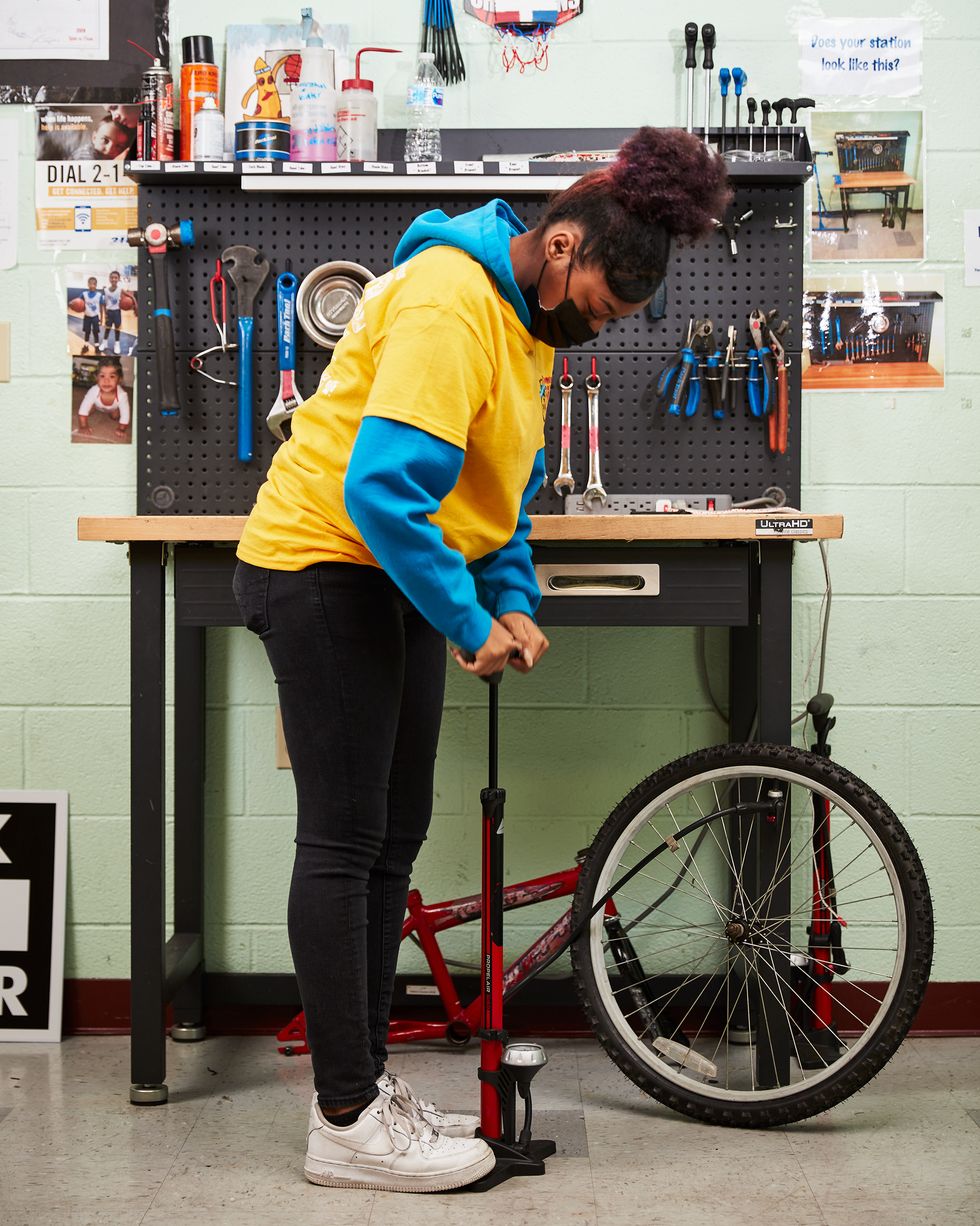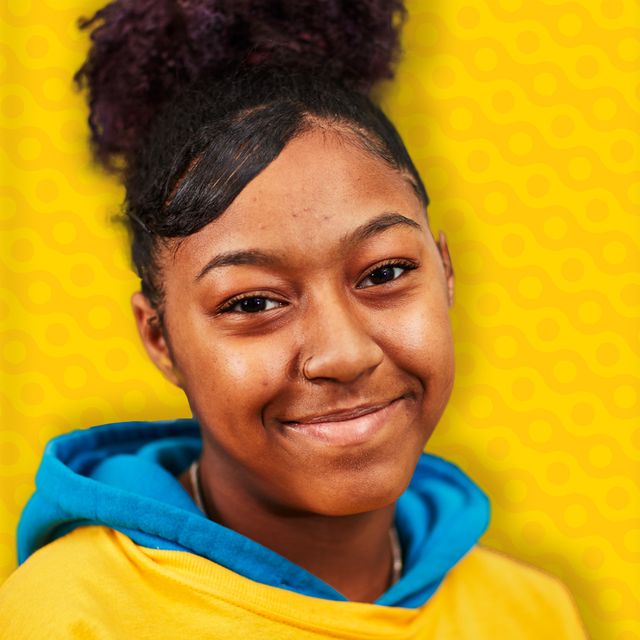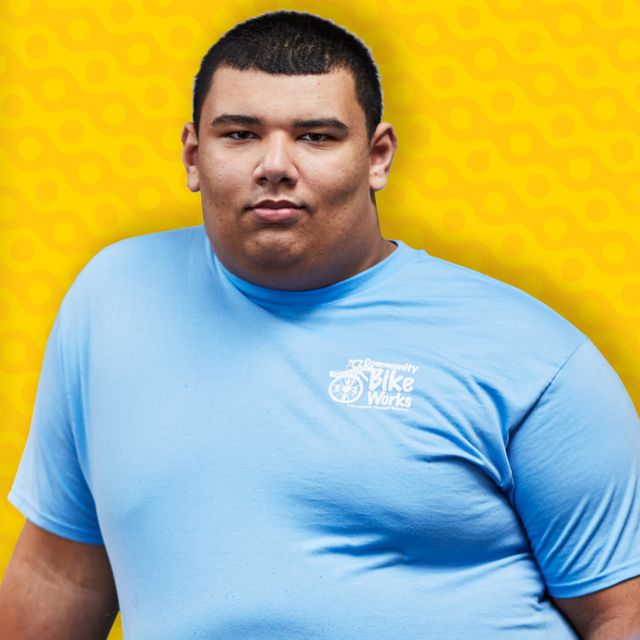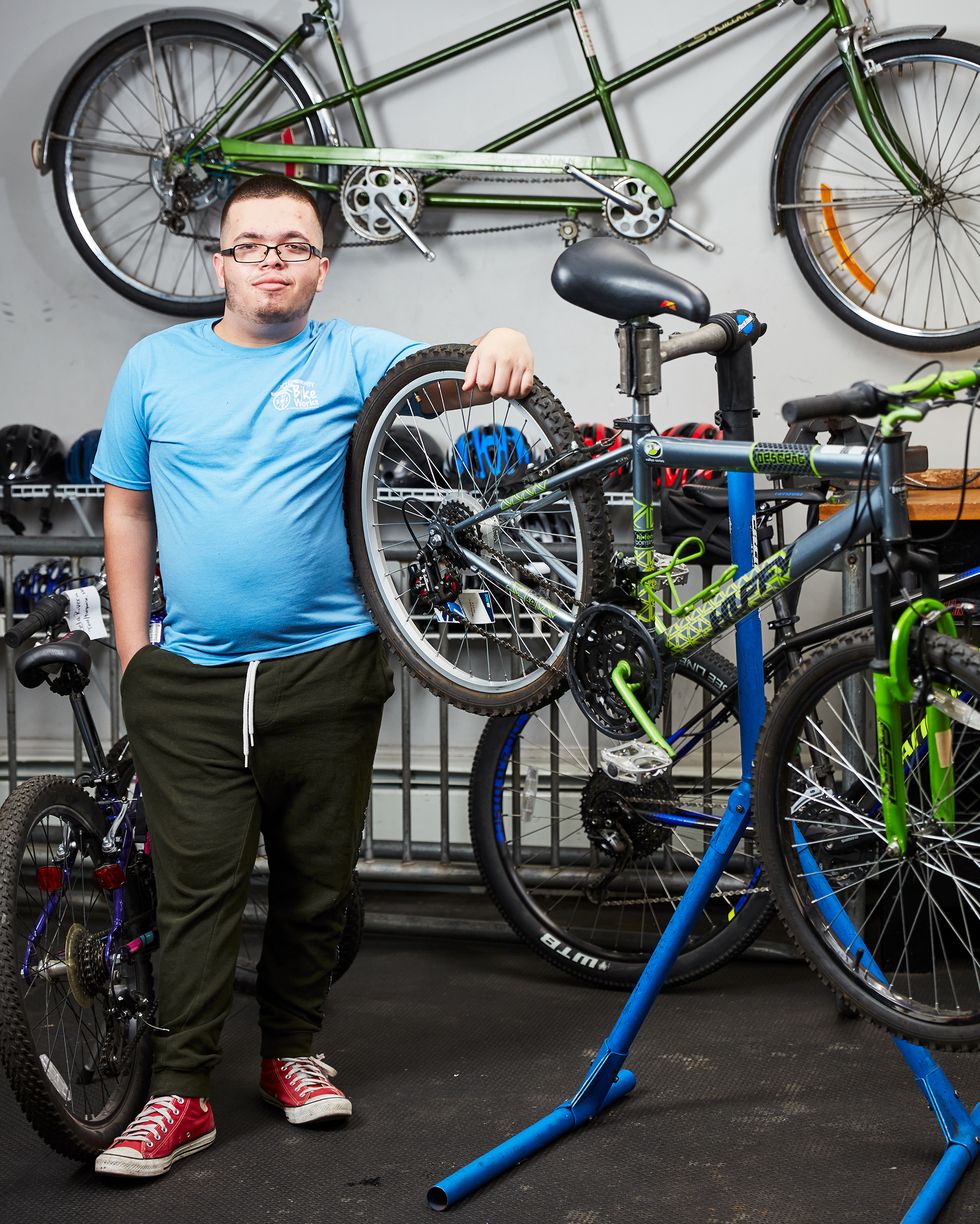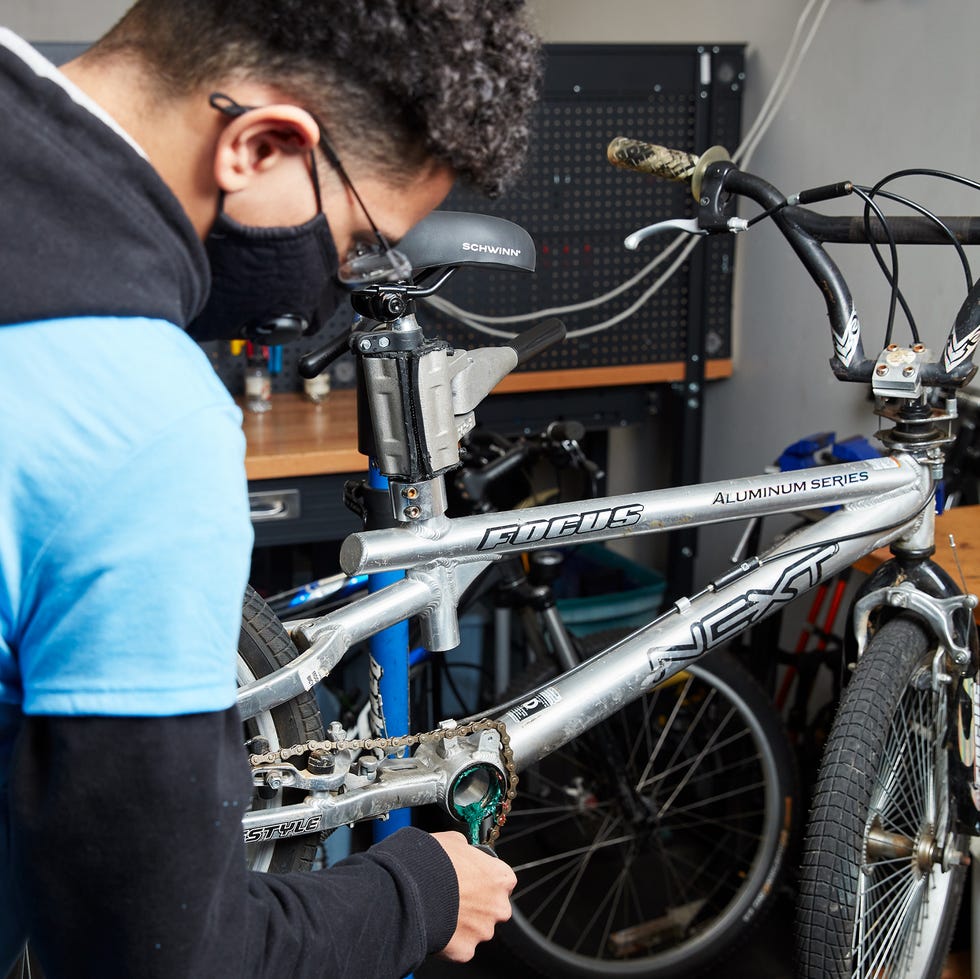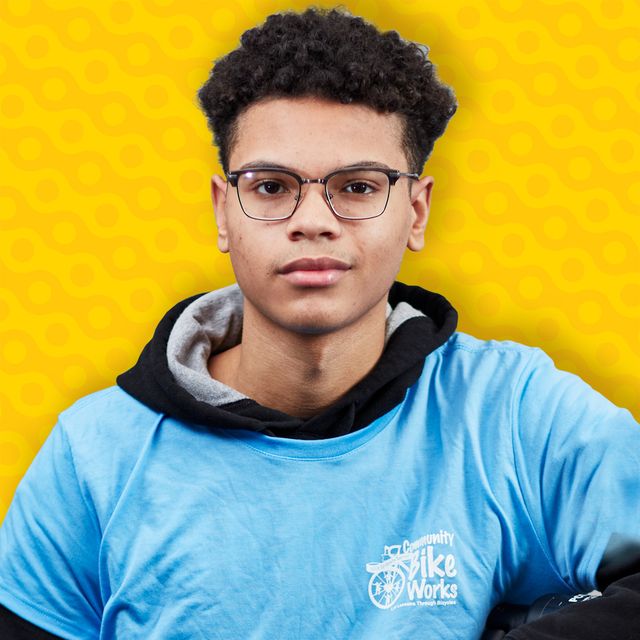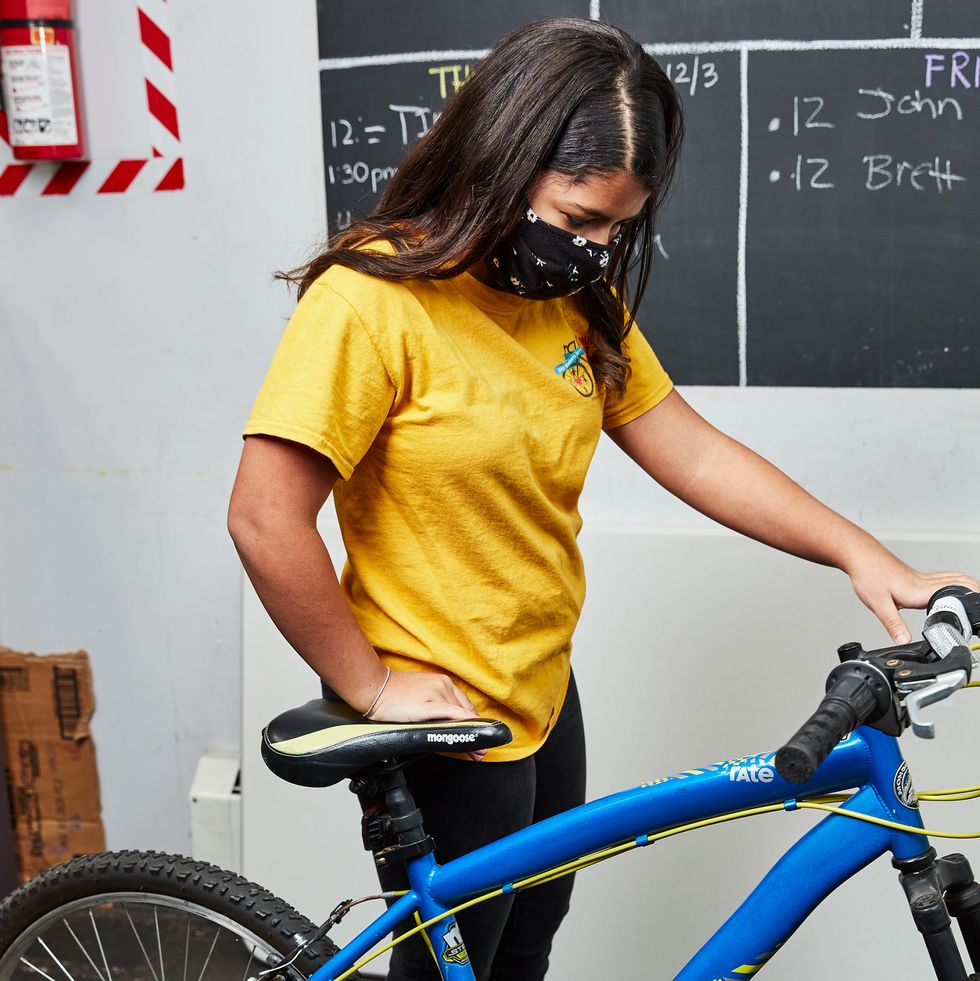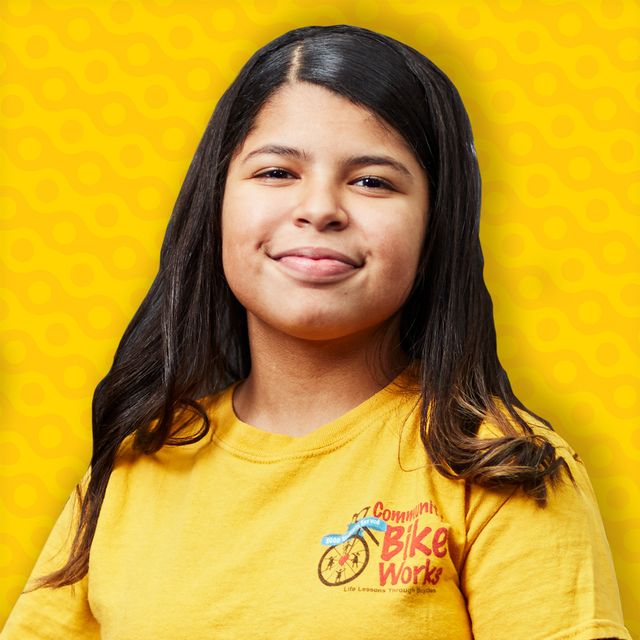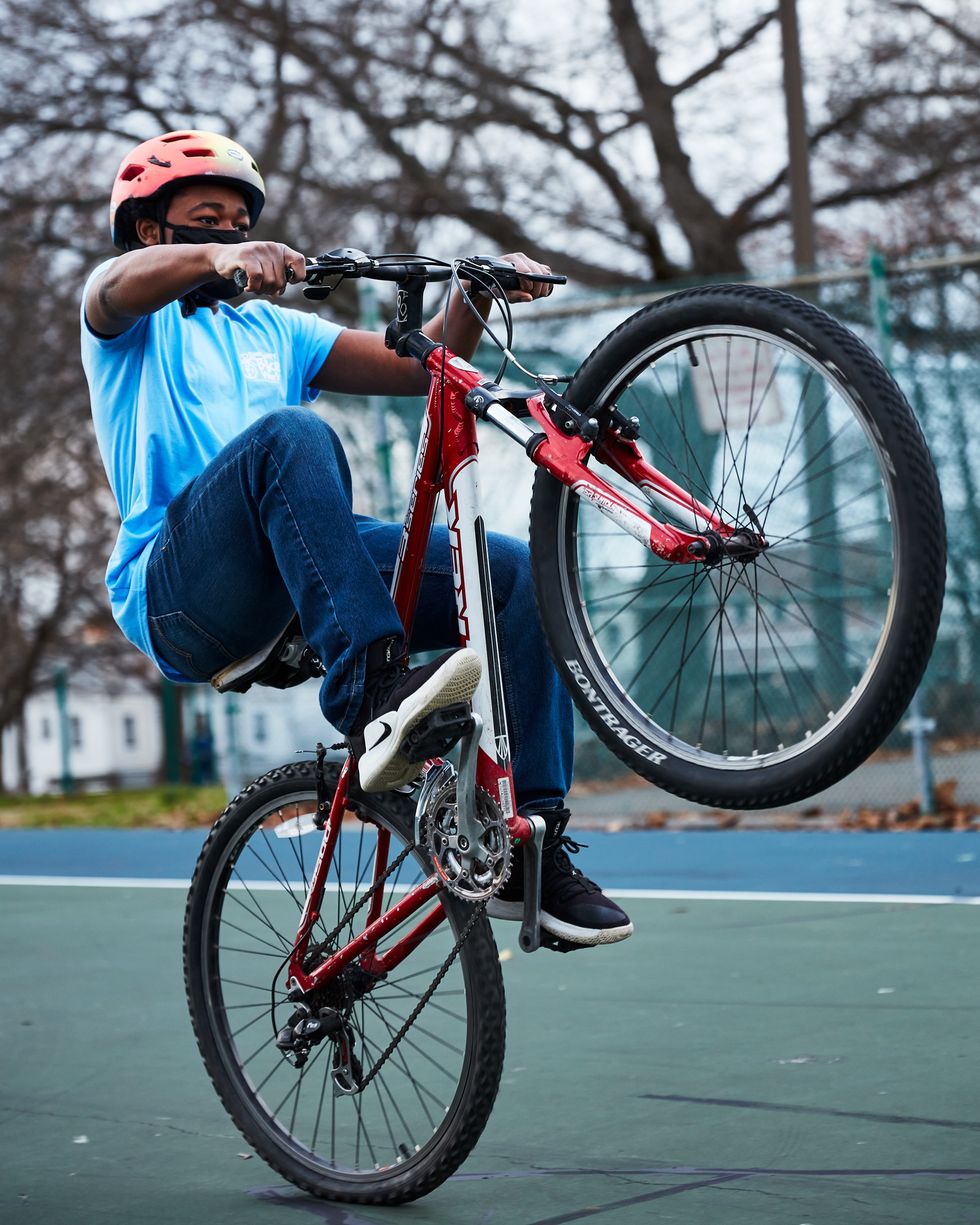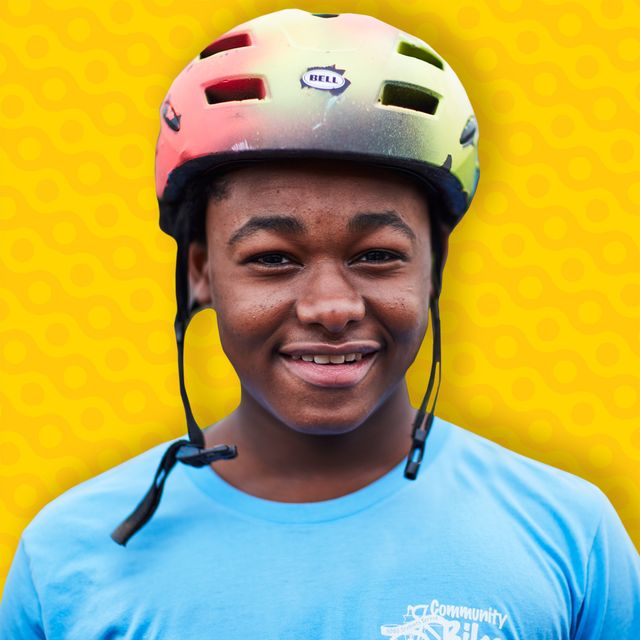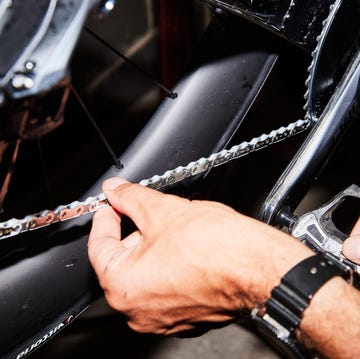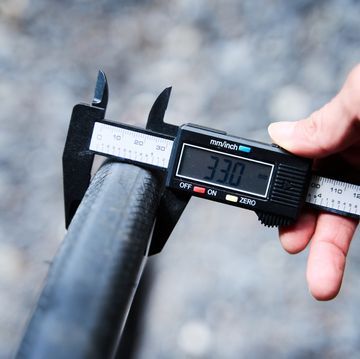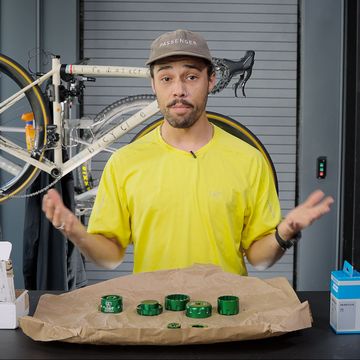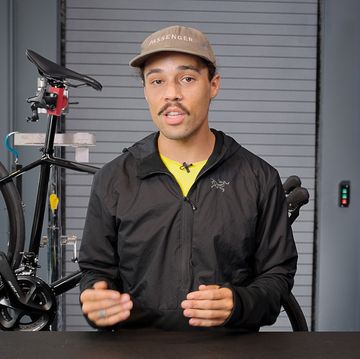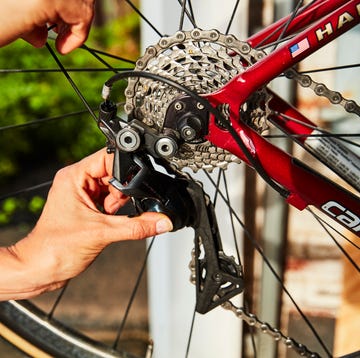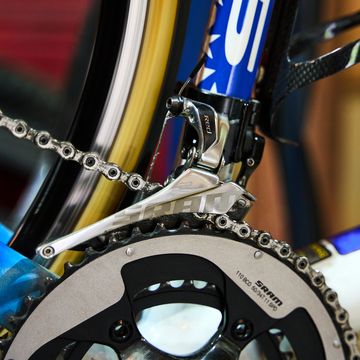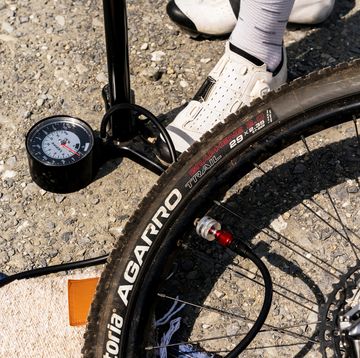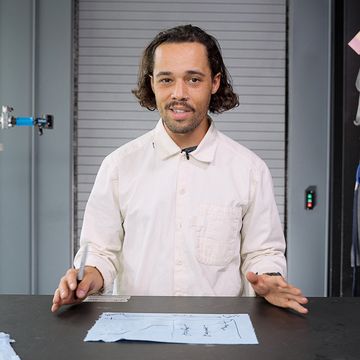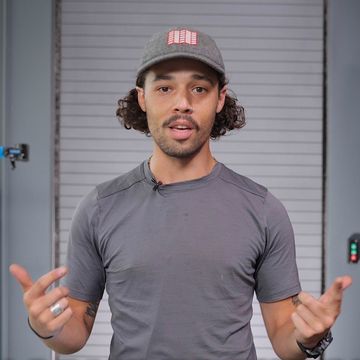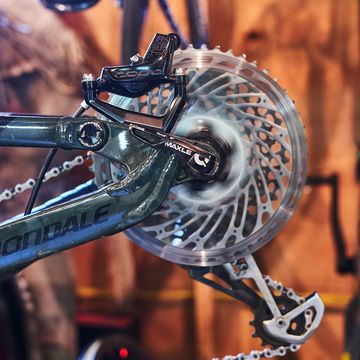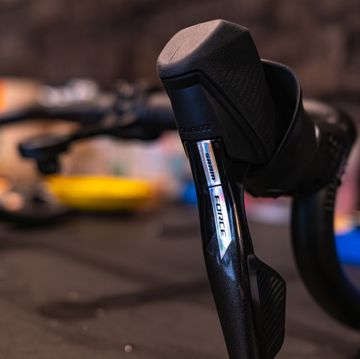Free bike!
That promise gets them in the door at Community Bike Works in Allentown, Pennsylvania. In CBW’s 25 years, more than 5,000 kids have answered the call for wheels of their own. The only requirement is that they learn to repair it during a free 12-week Earn-a-Bike program.
That CBW produces an army of young mechanics is almost beside the point. The group was founded to teach kids life skills—reading, communication, leadership—and bikes are the conduit. After that initial bike overhaul, students stay involved by earning books, taking group trail rides, leading repair lessons, and eventually, job shadowing. But many of their students will amass years of experience through after-school repairs and assisting—and eventually leading—classes. So we asked seven students to walk us through their favorite repairs.
This year, more than 11,000 kids will change their lives by learning how to build a bike. Find a program to support near you.
Find the Cause of Your Flat
First check that your tire is inflated within its recommended pressure range. That’s typically 25 to 35 psi for a mountain bike, 40 to 70 for a hybrid or gravel bike, and 80 to 130 on the road. Low tire pressure can allow a tube to be pressed against the rim and result in a pinch flat.
Next, inspect the tire for wear and damage, such as embedded glass, stones, and other road debris that might cause a flat. Cracks or a disappearing tread signal that it’s time for a new tire.
If you suspect a leak from your inner tube but can’t find a hole, give the tube a little air, cover it in soapy water, and squeeze, says Nasheera Brown, 16. “Then if you see bubbles, you have a hole.”
Nasheera Brown joined Community Bike Works at 11 and immediately pursued the Youth Leadership program, despite its age requirement (12). She was drawn to its summer reading program, and eventually CBW staff relented.
“I think it was them believing in me and giving me a chance to be able to read the book and see if I could congregate with the older kids,” she says. Nasheera wants to be an assistant district attorney, and the leadership program connected her with Philadelphia’s district attorney, Larry Krasner, for a job shadow. His alma mater, Stanford Law School, is where Nasheera wants to earn her law degree.
Change a Flat Tire or Tube
The Community Bike Works method uses three tire levers to remove the tire, the hardest part of any flat repair, says Paris Chatman, 16. First hold the wheel flat, with the valve closest to you. On the far side of the rim, opposite the valve, scoop a tire lever under the tire bead. Hook the end of the lever on the nearest spoke and repeat the process 3 inches to the left and right of the first tire lever. With a portion of the bead exposed, slip your fingers into the tire and pull the bead away from the rim. Remove the tube, starting opposite the valve. If you’re replacing only the tube, leave the second bead of the tire on the rim. Inspect the inside of the tire for any debris. If you’re replacing the tire, remove it completely from the wheel. Slip one bead of the new tire onto the rim.
Join Bicycling Today for More Bike Repair Tips, Advice, and Walk-Throughs
Pump enough air into your new tube to give it shape. Insert the valve stem into the valve hole, and put the tube into the tire. Working out from the valve, press the second bead into the rim. Use both hands to pull the last exposed bead into the rim. And be patient, says Paris. This is the second-hardest part.
Paris Chatman says her mother suggested she go to Community Bike Works when her little sister started going. She was hesitant, thinking it was just for “little kids,” but enlisted her BFF Ari Mitteff, who agreed to come along.
“When I did Earn a Bike, I liked that I was learning how to fix things. My uncle works on cars, so it made me feel accomplished that I could do something like that. When it was time to fix a tire, some people in the class said I wouldn’t be able to because my acrylic nails would get in the way. It was taking so long, but I said to my friend Ari, ‘We can do this!’ I did break a nail, but I took the tire off and put it back on. I was so proud of myself.”
Clean and Grease Your Chain
If your chain is noisy or covered in gunk, it’s time to clean and re-grease it. Debris and dirt compromise a chain’s performance and shorten its life. No need for a pricey de-greaser and brush; Community Bike Works just uses dish soap mixed with water, a dish scrubber, and an old toothbrush for difficult-to-reach places. Once the chain is clean, rinse with water, and dry it with an old towel or T-shirt.
If your chain is off the front ring at this point, says Christian Ortiz, 17, place it half on the ring, and then pull the pedal forward to rotate the chain and get it fully on. Apply your chain lubricant by dripping it onto the top of the chain while you turn the pedals backwards. Once the whole chain is lubed, spin the pedals a few extra times—it’ll help the lube sink into the inside of the chain, where it’s most needed. Then, give the chain a quick wipe to remove any excess grease, which can catch dirt.
When Christian Ortiz rides his bike, he says he immediately calms down. “I like working on bikes because you get to learn about new tools, new stuff, about bikes.” He also wrote and directed a short documentary on Community Bike Works’s impact on Allentown, The Future and The Now, which was accepted into the 2020 Philadelphia Latino Film Festival.
Align Your Brakes and Replace Worn Pads
Most of the bikes at Community Bike Works have rim brakes. First check that brake levers are working properly—when you squeeze the lever, the pads should fully stop the wheel before the lever touches the handlebar, says Chris DeBoer, 18. If the brake pads don’t both contact the rim when you brake, back out the barrel adjuster (one counterclockwise turn at a time) to tighten the cable. Spin each wheel, and if one pad is rubbing the rim, recenter the caliper by loosening the bolt holding it to the frame, then squeezing the lever and retightening that bolt. Or if the pads aren’t grabbing the rim evenly, or aren’t entirely on the rim, loosen the brake shoe (pad holder), reposition it, and tighten while the caliper is engaged and holding it to the rim.
Finally, check that the pads have life left in them.When looking from above, you should be able to see an indicator line on each pad. If you can’t see the lines, it’s time to replace them. If you have disc brakes and hear rubbing, first make sure your wheel is seated in the dropouts correctly. If it is, loosen the bolts that mount the disc brake to the frame, and tighten them back while squeezing the brake lever. This ensures that the caliper is centered on the rotor. If there’s still rubbing, the rotor may need to be trued (gently), using a rotor-truing fork.
To check disc brake pad life, look in the bottom of the brake to see the side profile of the pads. If you can’t see the pad at all, or if your pistons are stuck out as far as they can go, it’s time for a replacement set. Remove the pin holding the pads and pull the pads out from the top (or bottom, depending on the design) of the brake. After you put the new pads in, press the pistons back gently with the flat side of a big, wide flathead screwdriver to make room for the new, thick pads—otherwise, they’ll rub.
Chris DeBoer works as a paid apprentice at Community Bike Works, where he has the opportunity to teach students bike repairs. “I like to help people. They appreciate my advice and it feels good.”
Overhaul, Adjust, or Replace a Bottom Bracket
Consider this checkup an annual off-season to-do. Or, if you suspect a problem, check the bottom bracket for looseness by grabbing the crank arms and pulling them left to right—there shouldn’t be any play. Most bikes at Community Bike Works have a one-piece crank. To begin this overhaul, place the chain on the shell of the bottom bracket and remove the left pedal (it’s reverse threaded). Using a headset or adjustable wrench, remove the locknut on the left side and use a spanner or flathead screwdriver to remove the left cone. The crank and ball bearings should come out easily. But, says Avery Daniels, 15, be careful not to lose any of these small, easily misplaced parts. Clean the ball bearings, cones, and cups with a mix of equal parts water and rubbing alcohol. After checking the parts for wear, such as pitting, and replacing if needed, grease the bearings and cups, and reassemble the bottom bracket. Check for looseness again and replace the chain.
Most recent road and mountain bikes will use internal press-fit or external threaded bottom brackets. With the cranks removed, rotate the bearing with your finger to feel for play or grinding. Either indicates you need a new bottom bracket. Press-fit bottom brackets are removed with an extractor tool and hammer, and a new bottom bracket (press-fit cannot be serviced) is installed with a bearing cup press. External bottom brackets thread out and in with a model-specific wrench that matches its external notches. Before installing the new bottom bracket, clean and grease the frame’s press-fit surface or threads.
Avery Daniels came to Community Bike Works when he was 9. He’d just moved, and CBW proved a great way to make new friends. Now he’s a youth leader, teaching Earn a Bike classes. “One time I was teaching bottom brackets in class, and a kid turned his pedal while I was holding the chain and I nicked my finger pretty good. But I realized it was a learning process for the students, and they need someone to show them how it’s done.”
“I immediately fell in love with Bike Works,” says Avery. “I was here every day for the Drop-in program. We went to the park, played outside, played card games, and they gave us snacks. Every time they created a new program, I just kept participating. I like learning tricks, and everyone has their own riding style. It’s a way to express yourself.”
Set Your Saddle Height
The proper seat height lets your legs spin at peak efficiency. A lower saddle is more stable—there’s no arguing with physics—but it can lead to knee pain. For a quick seat-height guide, stand next to your bike. Your seat should be at the same height as the middle of your hip, says Siana Delgado, 12. “After standing next to my bike, I ride to check that it’s the right height. When a pedal is down, that knee should still have a slight bend.”
Siana Delgado came to Community Bike Works via her aunt, who works there. “I learned to ride when I was 7,” says Siana. “I keep coming back because of the relationships and connections I made. Riding a bike makes me feel free.”
Siana was one of CBW’s first participants in the Girls’ Earn a Bike program, which launched in 2018. “I learned how to fix my bike there. In Girls’ Night, I felt more comfortable adjusting my seat and other parts than I would have in a regular Earn a Bike class. I didn’t know anything about how bikes worked, and all of it was hard for me. Then I learned to fix a tire and brakes, so now I’m confident.”
Bonus: Learn to Wheelie!
Wheelies are not a formal part of the Earn a Bike curriculum, but students teach each other on social rides. Resident wheelie expert Sharif Brown, 14, recommends starting on a flat or slightly uphill surface. Place your index finger on your rear brake lever and as you begin to slowly roll forward, pull back and up with your handlebars while your dominant leg pedals forward. “Always look forward, shoulders back, arm locked,” says Sharif. Now it’s just a matter of finding that balance point between falling off the back of the seat and dropping the front wheel.
“If you can’t get the tire up, try going slower or shift to a harder gear,” says Sharif. “If you are falling off the back, softly touch that back brake. Practice seated before you try standing up. Kids always figure it out faster than adults."
Sharif Brown joined Community Bike Works when he was 8 years old because he wanted his own bike. “I was really nervous because there were so many people from different schools,” says Sharif, who now through CBW is exploring a career as a forensic scientist. “Then we signed in and got really hyped about it. I just wanted to pick my bike out already.”
